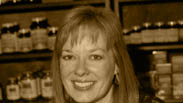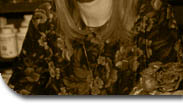(46)
Bart Tangonan
Tony Martinez
David Kie
Robert Spaet
The above four persons
in the toxicology department were involved
with
assembling data for
clinical chemistry and hematology determinations
for
April 1973 to Feb.
l974.
Joyce Schulmann -
performed urinalysis and hematology determinations
from
April l973 to Feb.
l974.
Philip Muellner -
Technician in Path-Tox Dept. July l970
till end of
study.
Janet Praal - Technician,
prepared individual work sheets for urinalysis.
No longer employed
by Searle.
C. The following
employees were interviewed regarding clinical
lab
procedures, and methods
for recording clinical lab. data.
1) Bart Tangonan
on 6/1/77 regarding the recording of data.
2) Judith Beauchamp,
on 6/2/77 regarding hematology and urinalysis.
3) Judith Schmal,
on 6/2/77, 6/7/77, and 7/29/77 regarding
clinical
chemistry.
4) Tony Martinez,
on 6/3/77 regarding urine and blood collection,
and recording of
data.
5) Jane Drury, on
6/7/77 regarding electrophoresis.
Accounts of these
interviews are attached as exhibits #47-54.
D. Other Documents
and Procedures Used to Authenticate Clinical
Laboratory Data values
in Submission were as follows:
1) One loose leaf
volume entitled "SC-19192: 104 Week
Oral
Toxicity Study In
The Rat. PT - 988573 Protocols, Organ
Weights, Dosage,
Hematology, Urinalysis, Blood Chemistry,
Protein Electrophoresis."
The volume was subdivided into
sections according
to the above parameters. The individual
(47)
pages (See Exhibit
#77, Section IX for example) are composed
of forms containing
the appropriate measurements and units
printed on the left
side of the page onto which data on
"sticky back
sheets" corresponding to each of
these
measurements were
pasted in columns representing the various
time periods. These
pages, in addition to other information,
were headed by the
identifying number of the rat for which
the measurements
were made. The information on the sticky
back sheets (see
Exhibit #77, Sec. IX) was copied (hand
written) from laboratory
notebooks, sheets, Auto-
analyzer Charts,
teletype sheets (on line data generated
by
analytical instruments)
or computer printouts (containing
raw and calculated
data resulting from on line or off line
input data from instruments)
by individuals of General
Toxicology Section
(see interview with Bart Tangonan).
Many of the pages
were initialed "BRT" (apparently
by Bart
R. Tangonan). Most
of the final values transcribed into
the sticky back sheets
resulted apparently from calculations
made directly by
the analytical instruments or by external
computer using the
appropriate stored equations and data
for
the reference standards.
(2) Since the values
appearing in the volume referred to in
the
above section were
copied from other sources, an attempt
was
made to verify these
values by examining the information in
these sources. No
attempt was made to recover the teletype
sheets, or computer
printouts which we were told were no
longer available
or could not be recovered (see interview
with Judith R. Schmal,
Exhibit #54). All laboratory notebooks
that might contain
the original data were requested. Notebooks
dated prior to the
dates of the DKP study were excluded.
The
appropriate laboratory
notebooks were then identified by BA
numbers which were
listed on the top sections of the sticky
back sheets included
in the volume referred to above.
Examination of these
few laboratory notebooks revealed only
a
very small amount
of data would could be used for additional
verification of the
values in the submission. It was necessary
to obtain the consultation
of Judith Schmal to clarify the
system used to relate
the values in these books with the
corresponding rat
and period of time of bleeding. The following
notebooks, as designated
by information on the front covers,
were examined:
(48)
1) Lab. notebook
#N-26375 (hematology), 25 June 71 to 1/21/72.
2) Lab notebook #127133
(phenylalanine), 10/8/71 to 4/21/72.
3) *Lab notebook
#113239 (cholesterol), dated 5/1/72.
4) *Lab notebook
#17, BA #0007118926 (SGOT), 12/27/71 to
2/25/72.
5) Lab notebook #126472
(phenylalanine), 4/21/72 to 6/8/72.
6) Blue Book #1591,
identified "JF VON - 70" (hematology).
7) Columnar book
#21, identified "JF VON 27"
(Differential cell
counts).
8) Spiral notebook
identified "JABEA-" (coagulation/prothrombin)
dated 7/23/71.
9) *Spiral notebook
#16, (SGOT), 8/27/71 to 12/16/71.
*Those books (3,4,
& 9 above) marked with an asterisk
provided us with no
useable data, because
a formula or standard curve (no longer
available)
was necessary to
convert the data.
Copies of the applicable
pages from all of the above notebooks
were
obtained, and are
included in exhibit #77.
The following data
were cross checked against available data
from original
entries (in addition
to being checked against transcribed data
on "sticky
back sheets"
in bound volume):
1. Hematology - Erythrocytes:
Treatment days 42,91,364
& 546 Males and Females.
2. Hematology - Leucocytes,
WBC:
Treatment Days 42,
91, 364, & 546 Males and Females.
3. Hematology - Leucocytes,
Differential:
Treatment Days 42,91,189,364,
& 546, Males and Females.
4. Hematology - Coagulogram,
Prothrombin Time:
Treatment Days 42
& 91, Males and Females.
(49)
5. Phenylalanine.
Treatment Days 42,189
Males and Females, Day 91 Males.
E. Discrepancies
were found between the clinical laboratory
methods described
on pages 5-7 of submission Volume 1
(referenced on page
120) and those actually carried out.
These discrepancies
were documented by the interviews
described in Section
C and in a document (Exhibit #77,
Section II) voluntarily
submitted by Jutidy Schmal, June
7, 1977 in response
to requests for clarification of the
clinical chemistry
procedures as they were actually conducted
in regard to analytical
methology instrumentation, and
processing and recording
of data.
1) Glutamic Pyruvic
Transaminase.
Reference: Russell,
C.D. and Cotlove, E. (1971)/
Clin. Chem. 17; 1114
The reference describes
a coupled reaction U.V. assay for
serum glutamic oxaloacetic
transaminase in which malic
dehydrogenase is
used.
As described by Judith
R. Schmal (June 7,1977) glutamic
pyruvic transaminase
was assayed by a method adopted from
Sigma Kit Technical
bulletin #410 - U. V. using Lactic acid
dehydrogenase.
2) Glutamic Oxaloacetic
Transaminase
Reference: Same as
in (1) above.
As described by Judith
R. Schmal (June 7, 1977), from Novem-
ber 1971 to March
15, 1972 a manual colorimetric method
(Fermco Kit) was
used (employing dinitrophenylhydrazine).
From March 15, 1972
the method used was adapted from Sigma
Kit, Technical bulletin
#410 - U. V. using Lactic acid
dehydrogenase.
3) Blood (serum)
urea nitrogen.
Reference: Marsh,
(Marsh in Submission) W.H., Fingerhut,
B. and Miller, H.
(1965). Clin Chem 11, 624.
The referenced method
calls for reaction of urea with diacetyl
monoxime in the presence
of thiosemicarbazide and ferric
ions in a relatively
weak acid solution.


